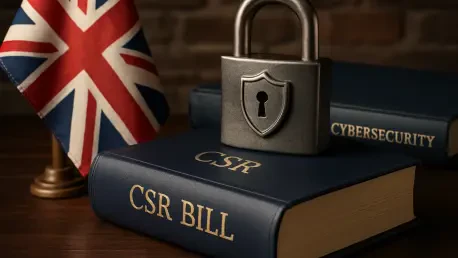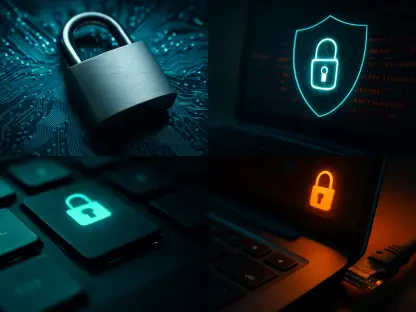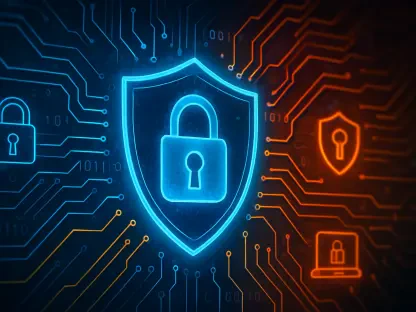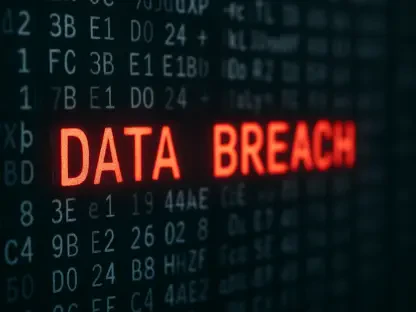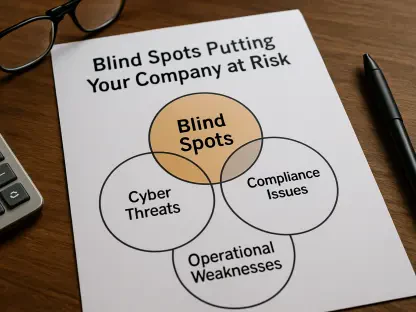Today, we’re thrilled to sit down with Rupert Marais, our in-house security specialist with deep expertise in endpoint and device security, cybersecurity strategies, and network management. With the recent introduction of the UK’s Cyber Security and Resilience (CSR) Bill to Parliament, we’re diving into a conversation about how this legislation aims to bolster national security, protect critical infrastructure, and address the growing economic toll of cyberattacks. We’ll explore the bill’s impact on datacenters, managed service providers, and everyday technology like smart devices, while also discussing the government’s new powers to enforce security measures. Join us as we unpack what this means for the UK’s cybersecurity landscape.
Can you give us a broad picture of what the UK’s Cyber Security and Resilience Bill is trying to accomplish?
Absolutely. The CSR Bill is a major step forward in strengthening the UK’s cybersecurity framework, particularly for critical sectors that keep the country running. It’s about ensuring that industries like healthcare, energy, transport, and digital infrastructure are better protected against cyber threats. The bill updates existing regulations to cover more entities and introduces tougher standards and penalties, with the ultimate goal of reducing the massive economic impact of cyberattacks, which currently cost the UK economy around $19.3 billion annually. It’s also a signal that cybersecurity is now seen as a core part of national security.
What do you think prompted the UK government to bring this bill forward at this specific moment?
I think it’s a response to the escalating frequency and severity of cyberattacks we’ve seen globally and locally in recent years. The digital landscape has evolved rapidly, with more reliance on interconnected systems and critical infrastructure. High-profile incidents, like ransomware attacks on hospitals or disruptions to supply chains, have likely pushed the government to act. Plus, with the economic cost of these attacks hitting 0.5% of GDP, there’s a clear financial incentive to strengthen defenses now before the damage gets worse.
How does this bill build on the older NIS 2018 regulations, and what new ground does it cover?
The NIS 2018 regulations laid a foundation by setting cybersecurity standards for critical infrastructure and some digital providers. The CSR Bill takes that further by expanding the scope to include entities like datacenters, which are now classified as critical national infrastructure, and managed service providers, or MSPs. It also introduces stricter reporting requirements and harsher penalties for non-compliance. Essentially, it’s adapting to a more complex threat environment and closing gaps that the older rules didn’t address.
Speaking of datacenters, why is their inclusion as critical infrastructure such a significant move?
Datacenters are the backbone of so much of our digital economy and public services. They store everything from patient records to financial transactions, and they power emerging tech like AI. If a datacenter goes down due to a cyberattack, the ripple effects could be catastrophic—think disrupted healthcare systems or halted payments. By bringing them under this bill, the government is recognizing their importance and ensuring they meet high cybersecurity standards to prevent those kinds of disruptions.
What kind of operational changes or new standards might datacenters face under this legislation?
Datacenters will likely need to invest in more robust security measures, like enhanced monitoring, incident response plans, and regular audits to meet the bill’s requirements. They’ll also have to report significant cyberattacks within 24 hours, which means having tight internal processes in place. This could increase operational costs, especially for smaller providers, but it’s a necessary trade-off to protect the broader ecosystem. They’ll essentially need to prove they can withstand sophisticated threats.
Managed Service Providers, or MSPs, are also included in this bill. Why do you think the government decided to focus on them?
MSPs are crucial because they manage IT and cybersecurity for many organizations, including those in critical sectors. If an MSP gets compromised, it can create a domino effect, giving attackers access to multiple clients’ systems. We’ve seen this in real-world attacks where a single breach at an MSP led to widespread damage. By including them, the government is ensuring that these providers, who are often a weak link, step up their security game to protect the broader network.
What hurdles might MSPs encounter in complying with these new cybersecurity rules?
MSPs, especially smaller ones, might struggle with the financial and technical burden of meeting these standards. Implementing advanced security tools, training staff, and maintaining constant vigilance isn’t cheap or easy. They’ll also need to handle rapid reporting requirements after an incident, which demands a level of organization some might not have yet. There’s also the challenge of balancing client needs with regulatory demands—some clients might resist changes that increase costs or disrupt operations.
The bill targets groups like Operators of Essential Services and Relevant Digital Service Providers. Can you explain who these are and why they’re in the spotlight?
Operators of Essential Services, or OES, are the providers of critical infrastructure—think energy grids, water systems, healthcare facilities, and transport networks. Relevant Digital Service Providers, or RDSPs, cover things like cloud computing platforms, online marketplaces, and search engines. They’re targeted because a breach in any of these areas can have massive consequences for public safety, the economy, or national security. The government wants to ensure these entities are fortified against attacks since they’re prime targets for malicious actors.
There’s a specific focus on organizations handling electricity delivery to smart devices like EV charging points. What’s driving attention to this area?
Smart devices, like EV charging points or home heating systems, are increasingly connected to the internet, making them potential entry points for attackers. If someone hacks into these systems, they could disrupt power delivery, manipulate usage, or even cause physical damage. With the UK pushing for greener tech and more electric vehicles, securing these devices is vital to prevent chaos in energy distribution and maintain public trust in these innovations.
How might these new rules around smart devices impact everyday people or households in the UK?
For the average person, these rules could mean higher reliability and safety for smart devices, since manufacturers and operators will need to prioritize security. However, it might also lead to higher costs for things like EV chargers or smart appliances as companies pass on compliance expenses. There could be some growing pains, like delays in rolling out new tech while security standards are met, but overall, it should reduce the risk of personal data breaches or service disruptions at home.
With cyberattacks costing the UK economy $19.3 billion, how does this bill aim to cut down on that financial hit?
The bill tackles this by raising the baseline for cybersecurity across critical sectors, which should prevent many attacks from succeeding in the first place. It also speeds up incident reporting and response, limiting the damage when breaches do occur. By giving the government powers to enforce specific security measures and levy hefty fines for non-compliance, it incentivizes organizations to invest in protection rather than risk massive losses. Over time, this should reduce downtime, data theft, and recovery costs that contribute to that $19.3 billion figure.
Can you share some real-world examples of recent cyberattacks that highlight the urgency of this legislation?
Certainly. We’ve seen ransomware attacks cripple healthcare systems, like the NHS facing delays in patient care due to compromised systems. There have also been incidents where transport networks were disrupted, causing chaos for commuters and supply chains. These aren’t just inconveniences—they cost millions in damages and erode public trust. Such events show why we need stronger laws to force organizations to prioritize cybersecurity and ensure a faster, coordinated response to threats.
The bill grants the government new powers to issue specific security demands to organizations. How will this work on the ground?
These powers allow the government, through the Technology Secretary, to direct organizations to take immediate action during a crisis—like ramping up monitoring or isolating systems to contain a threat. It’s about stepping in when a cyberattack poses a risk to national security or public safety. Regulators will likely work with affected entities to implement these measures quickly, ensuring minimal disruption while addressing the threat. It’s a proactive approach, rather than just reacting after the damage is done.
How do these new UK government powers stack up against what agencies like CISA do in the US?
There are similarities in that both aim to protect critical infrastructure through enforceable directives. CISA, for instance, can mandate federal agencies to patch vulnerabilities on tight deadlines, much like the UK’s new ability to issue emergency instructions. However, the UK’s approach seems broader in scope, applying to private sector entities as well, whereas CISA’s direct authority is more focused on government systems. The UK’s hefty fines for non-compliance also add a stronger stick compared to some of CISA’s enforcement mechanisms, though both share the goal of rapid response to threats.
Looking ahead, what is your forecast for the impact of this bill on the UK’s cybersecurity landscape?
I think this bill will significantly raise the bar for cybersecurity in the UK, especially for critical sectors. We’ll likely see a short-term spike in compliance costs and some pushback from smaller organizations, but over the long haul, it should lead to a more resilient digital ecosystem. The expanded scope and stricter rules will force industries to prioritize security in a way they haven’t before, potentially reducing the frequency and impact of major attacks. My hope is that it also fosters greater collaboration between government and private sectors to tackle evolving threats together.
